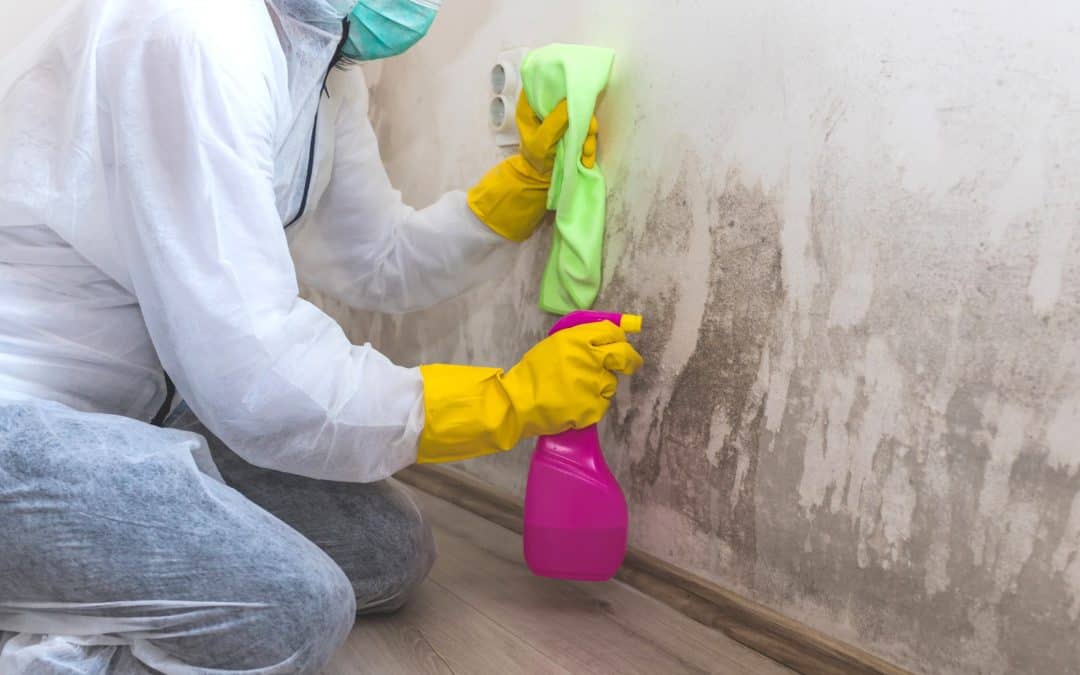Mold can be a sneaky intruder, creeping into your home unnoticed and causing all sorts of problems, from health issues to structural damage. Preventing mold growth in your home is crucial to maintaining a healthy living environment and preserving the integrity of your property. By taking proactive steps, you can keep your home mold-free and enjoy peace of mind knowing you’ve safeguarded your family’s health.
Understanding Mold and Its Causes
Before diving into prevention strategies, it’s important to understand what mold is and how it develops. Mold is a type of fungus that thrives in moist, warm environments. It reproduces by releasing tiny spores into the air, which can settle on surfaces and grow if the conditions are right. Common places for mold growth in homes include bathrooms, kitchens, basements, and areas with poor ventilation.
The key to preventing mold growth in your home lies in controlling moisture. Mold cannot grow without water, so by keeping your home dry and well-ventilated, you can significantly reduce the risk of mold taking hold.
Moisture Control: The First Line of Defense
Moisture control is essential for preventing mold growth in your home. Start by identifying areas that are prone to moisture buildup. Bathrooms and kitchens are common culprits, so make sure these spaces are well-ventilated. Use exhaust fans when cooking or showering, and consider installing a dehumidifier in areas that tend to be damp, like basements.
Leaky pipes and roofs can also lead to mold growth. Regularly inspect your plumbing and roof for any signs of leaks, and address them promptly. Don’t forget about windows and doors – make sure they are properly sealed to prevent water from seeping in during rainstorms.
Proper Ventilation: Let Your Home Breathe
Proper ventilation plays a crucial role in preventing mold growth in your home. Stagnant air can trap moisture, creating the perfect environment for mold to thrive. Ensure that your home has adequate ventilation by opening windows regularly to allow fresh air to circulate.
In addition to natural ventilation, consider using fans to improve air circulation, especially in areas like bathrooms and laundry rooms where moisture tends to accumulate. If your home is tightly sealed for energy efficiency, you may want to invest in a ventilation system that exchanges indoor air with fresh outdoor air.
The Importance of Cleaning and Maintenance
Regular cleaning and maintenance are key to preventing mold growth in your home. Dust, dirt, and organic materials can provide food for mold, so keep your home clean and free of debris. Pay special attention to areas that are prone to moisture, such as bathroom tiles, shower curtains, and kitchen countertops.
Use mold-resistant products when possible. For example, mold-resistant drywall and paint can be used in areas that are more susceptible to moisture. Regularly clean and maintain your HVAC system, as mold can grow in ducts and be spread throughout your home.
Responding to Mold Growth Quickly
Despite your best efforts, mold can sometimes still find its way into your home. If you spot mold growth, it’s important to respond quickly to prevent it from spreading. Small patches of mold can often be cleaned with a mixture of water and detergent or a solution of vinegar and water. Be sure to wear protective gear, such as gloves and a mask, when cleaning mold to avoid inhaling spores.
For larger infestations, it’s best to call in a professional mold remediation service. They can safely and effectively remove the mold and address the underlying cause of the moisture problem.
Setting Up a Mold Prevention Plan
Preventing mold growth in your home is an ongoing process. It’s important to set up a mold prevention plan that includes regular inspections, cleaning, and maintenance. By staying vigilant and addressing moisture issues as they arise, you can keep your home mold-free.
Start by scheduling routine checks of areas prone to moisture, such as basements, bathrooms, and kitchens. Make a habit of cleaning these areas regularly and addressing any signs of mold immediately. Consider installing moisture sensors in areas that are difficult to monitor, such as behind walls or under sinks. These sensors can alert you to potential moisture problems before they lead to mold growth.
Educate your family about the importance of moisture control and proper ventilation. Encourage everyone to use exhaust fans when cooking or showering, and to report any leaks or damp spots they notice.
Professional Help and When to Seek It
Sometimes, despite your best efforts, mold growth can become too much to handle on your own. Knowing when to seek professional help is crucial for preventing mold from causing serious damage to your home and health.
If you discover a large mold infestation or if the mold keeps returning after repeated cleaning, it’s time to call in the experts. Professional mold remediation services have the tools and expertise to remove mold safely and completely. They can also help identify and fix the underlying moisture problems that are causing the mold to grow.
Additionally, if anyone in your household experiences persistent health issues such as respiratory problems, allergies, or headaches, it may be a sign that mold is present in your home. A professional inspection can help determine if mold is the culprit and provide a plan for addressing it.
Conclusion: A Mold-Free Home Is a Healthy Home
Preventing mold growth in your home is essential for maintaining a safe and healthy living environment. By focusing on moisture control, proper ventilation, and regular cleaning, you can keep mold at bay and protect your home from its damaging effects.
Remember, prevention is always easier than remediation. By taking proactive steps and setting up a mold prevention plan, you can enjoy peace of mind knowing that your home is mold-free. If mold does become a problem, don’t hesitate to seek professional help to ensure it’s dealt with properly.
